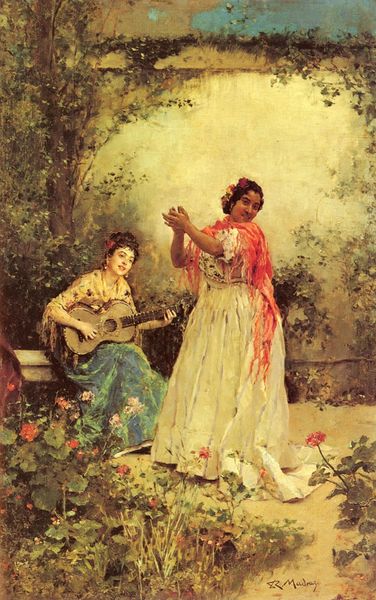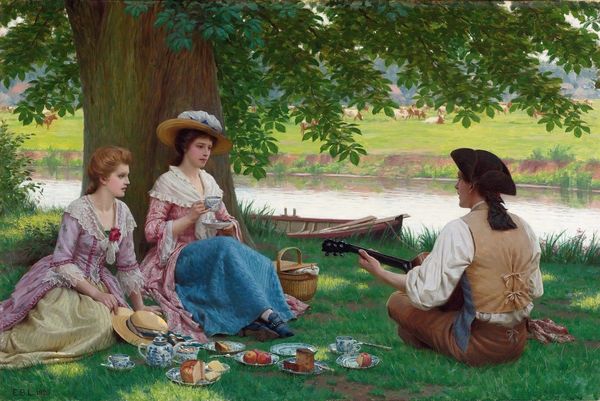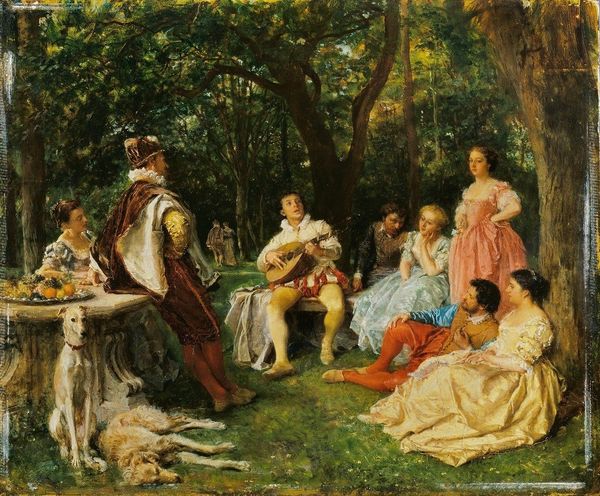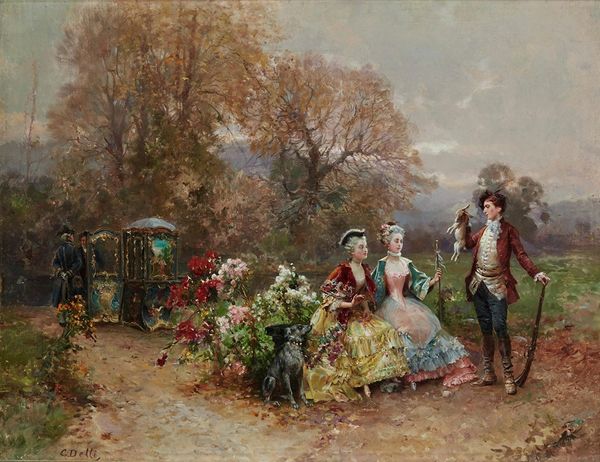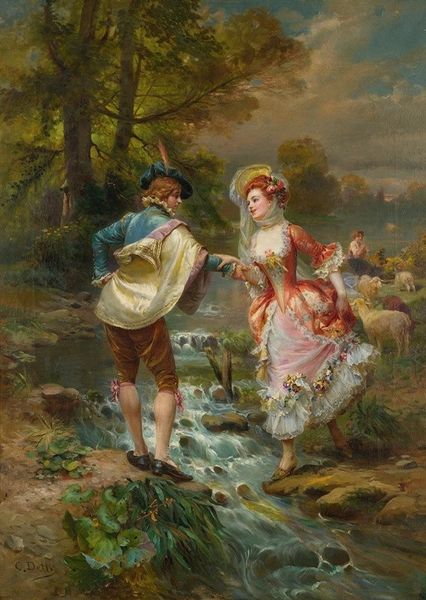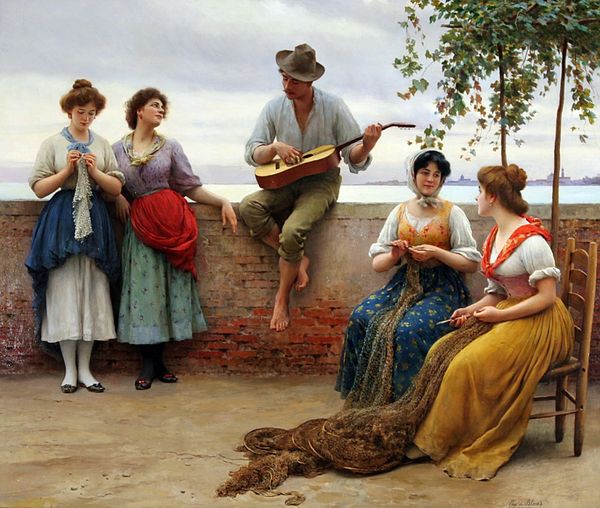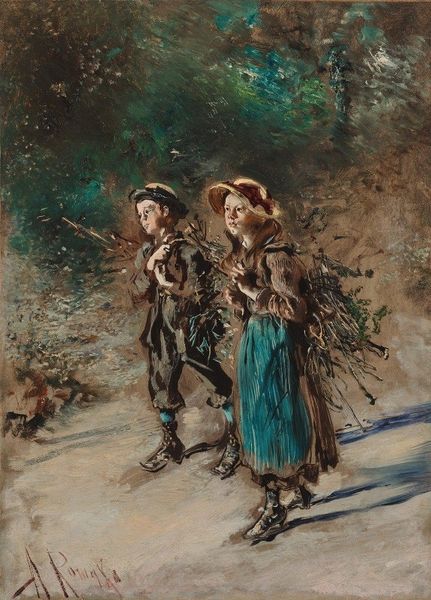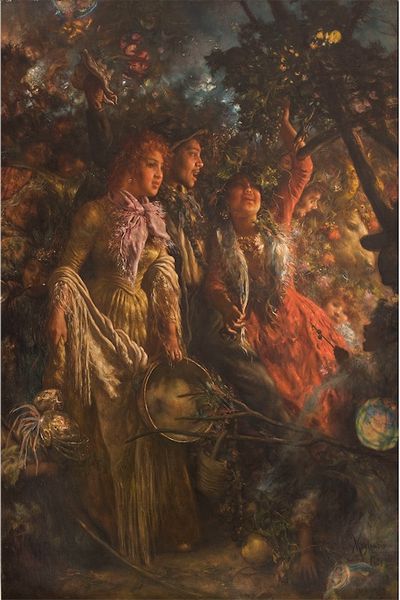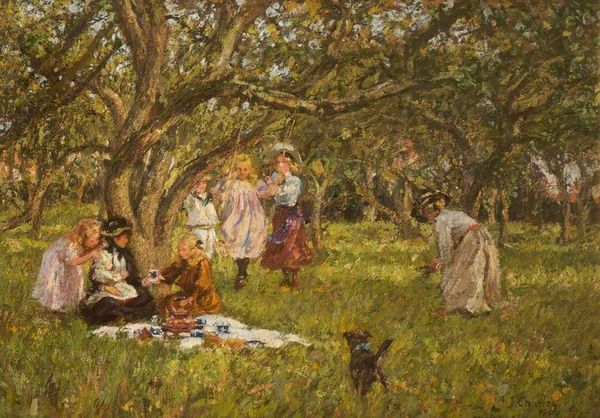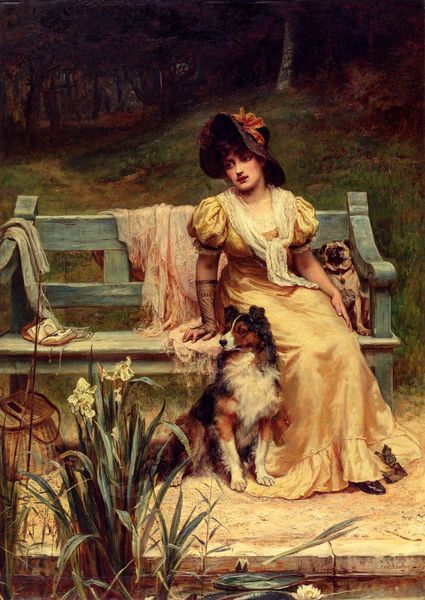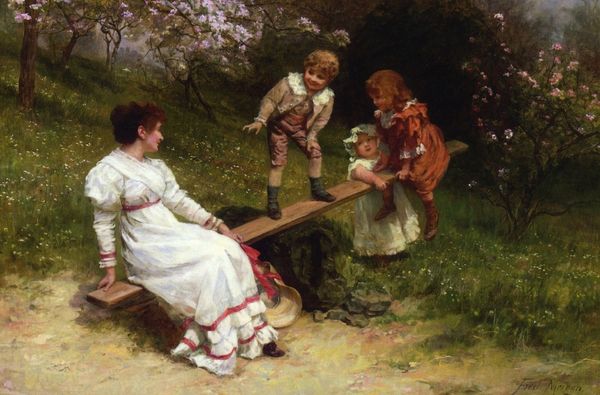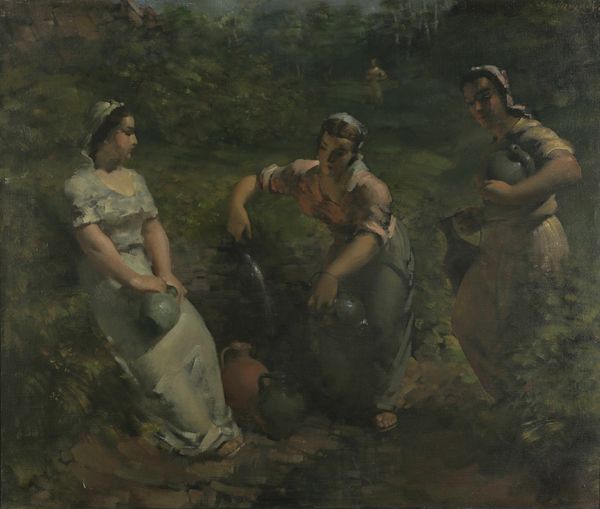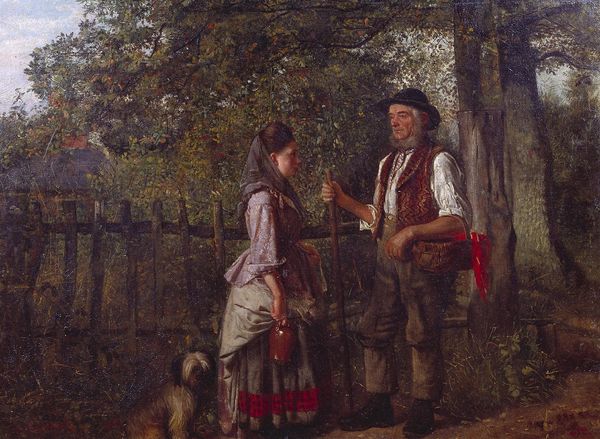
painting, oil-paint
#
gouache
#
figurative
#
painting
#
impressionism
#
oil-paint
#
group-portraits
#
romanticism
#
genre-painting
Copyright: Public Domain: Artvee
Curator: This painting, titled "Music in the Garden," attributed to Cesare Auguste Detti, captures a group in what appears to be leisurely enjoyment of each other's company and their surroundings. Editor: The painting evokes a strong sense of artifice to me, with its heightened theatricality. It is difficult for me to understand its relation to life beyond some strange court. The textures in the clothing alone are remarkable – look at the way the fabrics fall and reflect the light! Curator: Yes, absolutely! Let’s consider how costume functions here. This aesthetic speaks to an obsession with re-enactment and a desire to materialize bygone eras. It speaks to the role-playing within social structures – who had access to leisure, who performs for whom, and what the expectations were around behavior. What norms are being produced in this theater? Editor: Agreed. The very notion of a "garden" becomes interesting when we focus on the production of the site. Note how the costumes are arguably more textured than the “natural” elements! It's clearly not just a backdrop but a stage where materials signal wealth, status, and cultural capital. Curator: And what about the implied relationship between the musicians and their audience? Consider what it might mean for women during this historical period to be subjects *of* art rather than producers of it. Editor: This piece underscores how class shapes material access *to* art and its interpretation. Think about the labor required to create these textiles. The layers of production. The elite could consume beauty because of the toil of others. How might we reassess “beauty” if we foreground labor, both inside and outside the frame? Curator: So, instead of seeing this painting as simply depicting a historical scene, we recognize how it perpetuates a system, performing those power relations through display. We need to unpack the historical context and connect it to our current understanding of how power manifests. Editor: Precisely. Examining its materiality and the circumstances of its creation and its reception prompts a critical assessment. By considering the labor involved, it invites us to think deeply about the relationships and production processes behind it, thus broadening its cultural and social impact.
Comments
No comments
Be the first to comment and join the conversation on the ultimate creative platform.

